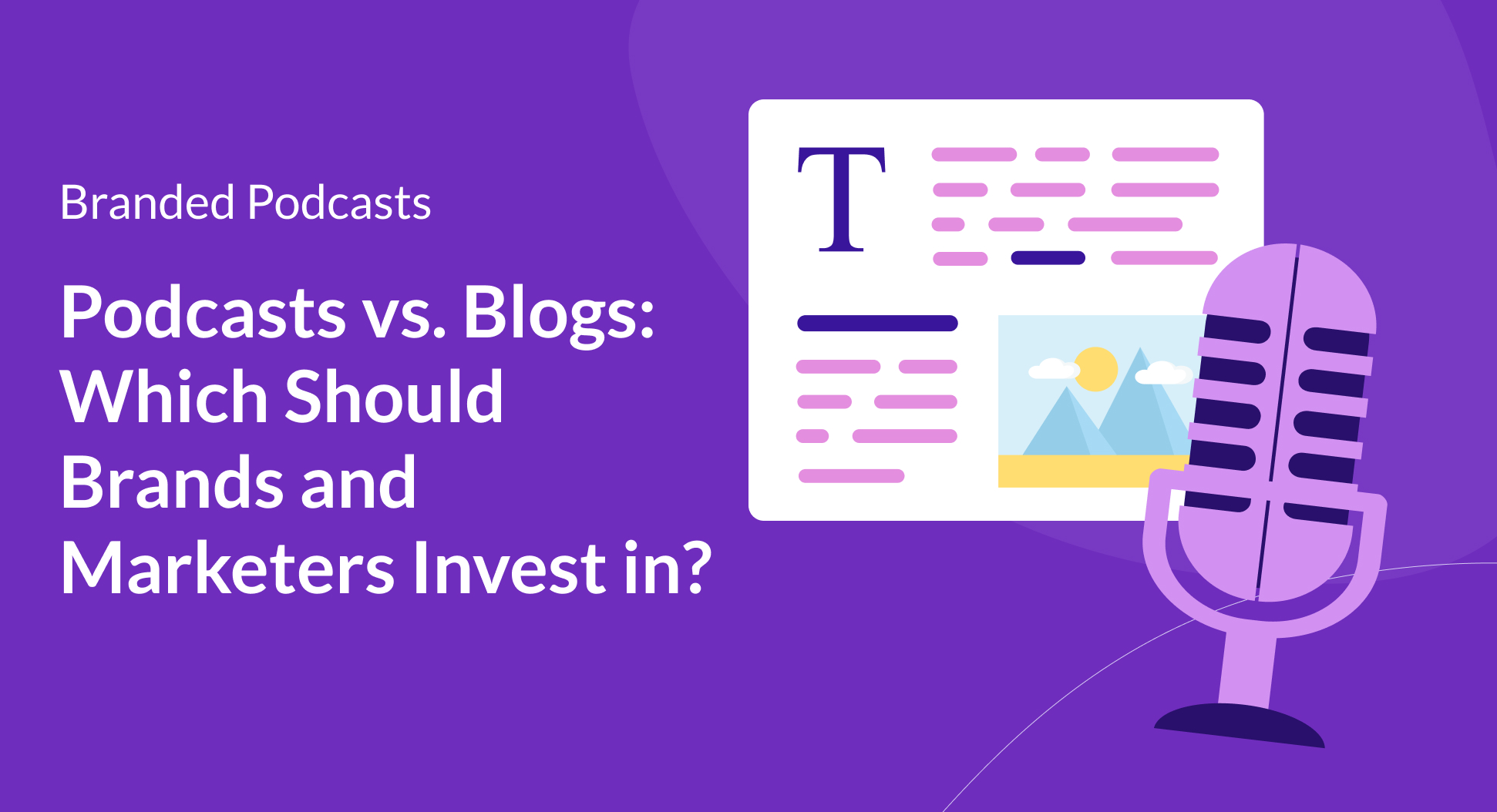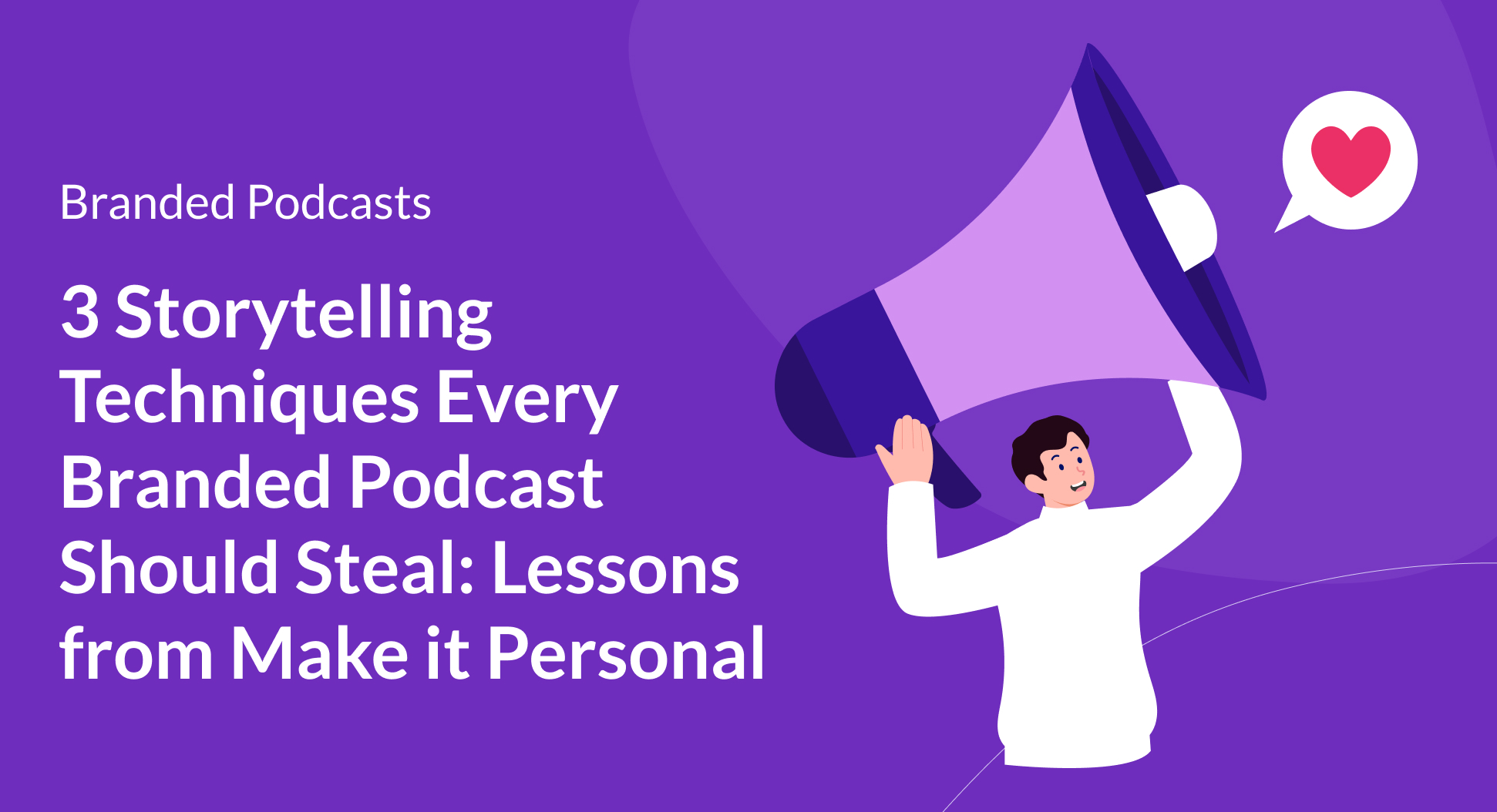Contents
Unless you’ve been living under a rock, you know that podcasting is top of mind for marketers right now and continues to grow in popularity as a branded content channel.
With the growth of podcasting comes the discussion around what type of brand should be creating audio. In recent years, the growth of podcasts in the B2B sector is undeniable. Brands like PwC, McKinsey & Co, Uberflip, McAfee, Amdocs, and so many more have emphasized podcasts in their content strategies.
Whether you’re a B2B brand thinking about starting a podcast or a B2B brand looking for ways to grow your show, there are a few things to think about if you want your show to resonate with target audiences.
Follow these 7 B2B podcast best practices below if you want to make your show a hit with target listeners as well as boost your conversions and sales in the process.
Let’s dive in!
1. Publish Frequently and At the Same Time
Consistency is the key when it comes to marketing your podcast. Make sure you let your audience know when they can expect to hear from you next. Start with a podcast content calendar that you know you and your team can manage. Maybe this is weekly, bi-weekly, or monthly, whichever you choose - try not to miss producing an episode. You want to maintain engagement and consistency with your audience while also building trust around when they can expect to hear from you.
If you are just starting out with your podcast, one tip is to look at what other shows are doing in your category and industry, then model your publishing time of day to match others in the space. Podcasts that have been around longer than you have likely based their publishing schedule on data and trends that maximize listenership.
Generally, we’ve found with our client’s B2B podcasts tend to perform well on a weekly or bi-weekly cadence.
Overall, your posting cadence is going to come down to what your team is able to manage as well as what your audience prefers. Start with weekly or bi-weekly if you can and go from there. You can even put out surveys to your target audience to get an idea of a posting schedule they prefer.
2. Leverage Email Marketing
Building a subscriber list is one of the surest ways to keep re-engaging a loyal audience outside of the podcast. Be sure to notify your listeners of each new episode, and if you have a broader CRM list, consider how to make them aware of your podcast on a regular basis such as including a link to your latest episode in your monthly newsletter.
There are ways to even take it another step forward. For example, in your email body, be sure to include what's in it for the listeners: key takeaways from the episode, the length of the episode, and if relevant, include the name of the guest on the podcast.
Another bonus tip: It's also a good practice to include a link to your B2B podcast show in your email signature. The key is to never miss a chance to be promoting your show without it coming off too forced. All of these small add-ons or changes are powerful drivers for a growing audience over time.
3. Think About Strategic Guesting
Being a guest on someone’s podcast is a creative collaboration with mutual benefits, just like having someone on your podcast. You get to expand your audience by involving yourself in a different show and a different group of listeners, while the podcast you’re speaking on gets to have the crossover benefit of your listeners tuning in to see what you have to say.
4. Develop Blog Content
One of the most important aspects to focus on to grow your B2B podcast is content creation. There are many ways to repurpose your audio content and use your blog to further support your podcast.
Theme-based posts
After you have a solid number of podcast episodes under your belt, go back and identify common threads or interesting themes you could write about for a blog post. You could also dedicate theme-based posts to end-of-season key takeaways or do a behind-the-scenes post on what it is like to produce a season of the podcast. The key is to get creative about ways you can repurpose the content you already have.
Episode recap posts
Another way to support your podcast on your blog is with episode recap posts. Episode recaps are a great way to break down episodes even further and provide your audience with additional snippets and valuable nuggets they won’t find anywhere else.
Extended guest interviews
You could consider including extended guest interviews; this offers a unique value for your audience and gives them another way to engage with your content. If you have a bunch of audio that didn’t make the final cut of your podcast episode, you can embed those clips into your blog post or format the post in a question-and-answer style format.
5. Encourage Ratings & Reviews
Reviews are a powerful tool that you can utilize to gain popularity. Ask listeners at the beginning or end of each episode to share, subscribe, and provide a review of your podcasts.
Be authentic and explain how these actions will help you grow and produce better-quality content. Also, always respond and engage with reviews to build deeper connections with the audience if they live on platforms like YouTube or social media channels.
6. Create Paid Marketing Campaigns
One of the most powerful ways to attract listeners is to create multi-channel paid advertising campaigns. You could either run campaigns for your show overall or for specific episodes that are the most popular.
Audio Platforms
We’ve found great success in advertising podcasts on audio-specific platforms such as Player FM, Castbox, Podcast Addict, and Overcast. Typically, these ad platforms will show a banner-style ad for your podcast either on the homepage or on category-specific pages. It’s a great way to get your show in front of new potential listeners when they already have the intention of listening to a podcast.
Social Media
Overall, social media can be a great tool for advertising your podcast. In our experience, social media or other non-audio-focused platforms perform best for reach and awareness and then audio-specific platforms perform best for conversions.
Facebook and LinkedIn are powerful platforms for reaching primarily B2B business audiences, and marketing on these platforms is relatively simple as you can narrow down your target audience through age group, geographic location, target industry, interests, etc.
Google Ads is also something you don’t want to forget if you want to reach a broader audience. Buy ads on Google for keywords people might typically use to search for your show, and you will appear at the top of the first search page. Remember to always direct the traffic from these ads to your podcast’s landing pages for the best results.
For Instagram, influencer marketing would be the best tool. To execute this tactic well, you would need to find an influencer in your niche and partner with them to promote your show (and finds ways to showcase how they would benefit by partnering with you if you don’t have budget to pay them!).
7. Cross Promote Regularly
The great thing about podcasts is that listeners aren’t devoted to only one show per industry. In fact, when people hear quality content, they’re probably going to look for more material on that subject. Therefore, cross-promoting with other shows in your space is a tactical move. They plug your show, you plug their show, and both parties benefit.
Connect with fellow podcasts that wouldn’t see your show as direct competition. As a brand, we typically look for podcasts that aren’t created by other brands. Rather, we look for independent creators to collaborate with.

.avif)




.png)

.png)




.png)
.png)
.png)
.png)